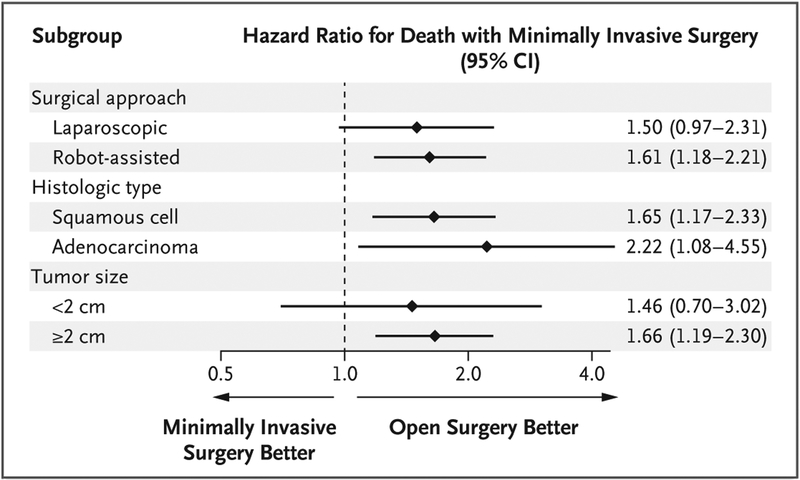Figure 3. Subgroup Analyses.
Subgroup analyses show the associations between minimally invasive radical hysterectomy and all-cause mortality according to mode of minimally invasive surgery (laparoscopic approach vs. robot-assisted approach), histologic type (squamous-cell carcinoma vs. adenocarcinoma), and tumor size in the greatest dimension (<2 cm vs. ≥2 cm). Diamonds represent point estimates for the hazard ratio as compared with open surgery, and horizontal lines indicate the associated 95% confidence intervals. Separate propensity-score models were fitted to predict the probability of minimally invasive surgery for each subgroup, and hazard ratios were estimated with the use of inverse probability of treatment–weighted Cox proportional-hazards models.

